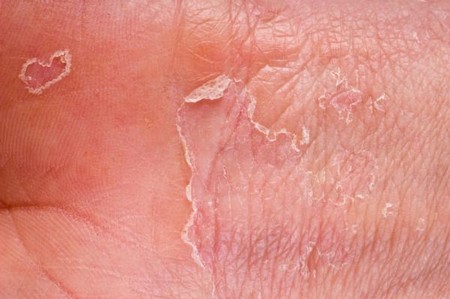Best Way to Understand Contact Allergies
If your skin reacts adversely to direct contact with something in the environment, it could be an allergic response (one involving the immune system) or a non-allergic response (due to an irritant). These conditions often co-exist, however for example, damage to the skin by an allergen increases the likelihood of you responding to an irritant. The common skin conditions associated with contact responses are eczema and urticaria. Eczema is also called dermatitis (inflammation in the skin), and when an allergen is involved it is termed allergic contact dermatitis.
Allergic contact dermatitis
The development of this disease is brought about by repeated exposure to an allergen, which then leads to sensitization. Since the skin is an effective barrier to proteins entering the body, most cases of allergic contact dermatitis are caused by chemicals or metals entering the skin and binding to the body’s own proteins and inducing an immune response. Symptoms are delayed and usually peak somewhere between 24 and 48 hours after exposure – so this is not an acute allergic reaction.
Coming into contact with a large range of chemicals and metals can result in allergic contact dermatitis, although most are usually encountered only in a work environment. Contact with allergens in the home commonly affects the hands, face, and neck. Skin symptoms to look out for include:
- Reddening
- Swelling
- Intense itching
- Small bumps that may blister and weep
- Cracking, scaling, and thickening of the skin after repeated exposure
The list of potential causes of allergic contact dermatitis is extensive, but the metals, fragrances, and chemicals found in the following products and plants are common offenders:
- Cosmetics and face creams
- Perfumes
- Shampoos Nail varnish
- Hair dyes, perms, and setting agents
- Jewellery containing nickel
- Watch straps or buttons
- Poison ivy and poison oak
You may become aware of nickel sensitivity on your earlobes if you constantly wear earrings containing this metal. Unpleasant reactions can also occur in response to the chemicals found in some types of clothing dye. Those found in socks and shoe leather will affect your feet or the lower part of your legs.
Symptoms of irritant dermatitis are commonly experienced on your hands from contact with:
- Soaps
- Biological detergents
- Solvents
- Oil
- Alkalis, such as bleach
Although the reactions to allergic and irritant dermatitis may be difficult to differentiate, the principle of management remains the same: first, recognize the problem and determine what is causing it; and, second, avoid the offending agent in future.
Among plant sources of chemicals that could produce allergic contact dermatitis are the primulas. The chemical primin found in these plants, especially Primula obconica and, to a lesser extent, P. malacoides, has a strong sensitizing potential and produces symptoms on the hands or arms or indeed, anywhere you spread the contamination by touch.
Three other plants, poison ivy, poison oak, and poison sumak contain the chemical urushiol in their resin, which is a potent sensitizer These plants are are all members of the genus Toxicodendron. Anybody who is sensitive to poison ivy, oak, or sumak may also react to other plants in the same family (Anacardiaccae), including cashews, mango, ginko, and Japanese lacquer
Contact urticaria
With contact urticaria, you first experience reddened, itching skin, followed by a raised swollen area (hive), which is red initially but may then become pale in colour.
This condition is sometimes called hives, or nettle rash, since the reaction does resemble a nettle sting. Symptoms vary from very mild (with just a burning, mild itch) to severe (with extensive, itchy hives over all parts of the body). In general, however, reactions are mild, occurring within minutes of contact and subsiding again within just a few hours.
The majority of urticaria reactions are non-allergic and are due to irritant chemicals, such as preservatives (benzoic acid, sorbic acid, cinnamic acid), fragrances, medications applied to the skin, animal products, and plant products (including nettles and seaweed). Allergic (immunological) contact urticaria arises only if you place a protein to which you are sensitized on a damaged area of skin, such as a scrape or cut. When this happens, reactions can arise to proteins normally associated with food allergies, such as eggs, milk, nuts, fruit, seafood, and vegetables. Allergic reactions to preservatives, fragrances, and plant products are also possible. The most serious of these is latex allergy, which has the potential to cause widespread and very serious allergic responses.
Categories
Advertisements
Recent Articles
 How to Understand Bed Sizes – A Small Guide
How to Understand Bed Sizes – A Small Guide How to Select Some Must Have Kitchen Accessories
How to Select Some Must Have Kitchen Accessories Best Way to Change a Car Tire
Best Way to Change a Car Tire Best Way to Write an Affirmation
Best Way to Write an Affirmation Best Way to Take Charge of Your Financial Life
Best Way to Take Charge of Your Financial Life Best Way to Survive a Party When You Don’t Know Anyone
Best Way to Survive a Party When You Don’t Know Anyone Best Way to Stop Self Sabotaging Yourself
Best Way to Stop Self Sabotaging Yourself Best Way to Start Journal Writing
Best Way to Start Journal Writing Best Way to Speak with a Powerful Voice
Best Way to Speak with a Powerful Voice Best Way to Simplify Your Life
Best Way to Simplify Your Life Best Way to Respond to a Put-Down
Best Way to Respond to a Put-Down Best Way to Reduce Acne Breakouts
Best Way to Reduce Acne Breakouts Best Way to Recover from Dining Disasters
Best Way to Recover from Dining Disasters Best Way to Quit Your Job Gracefully
Best Way to Quit Your Job Gracefully Best Way to Make Your Own Website
Best Way to Make Your Own Website



Leave a Reply